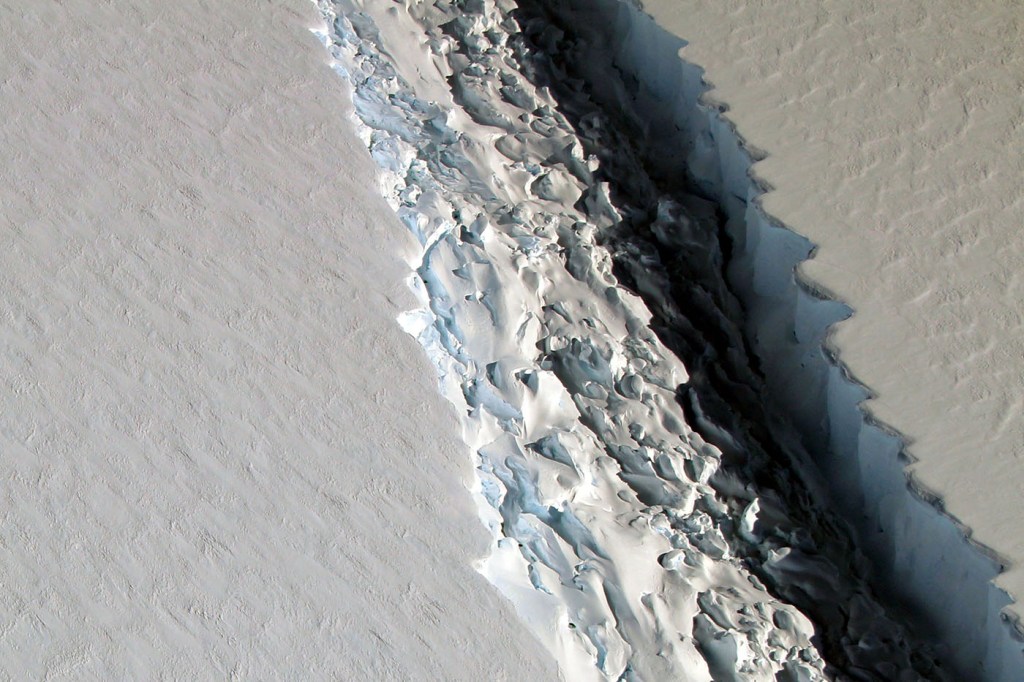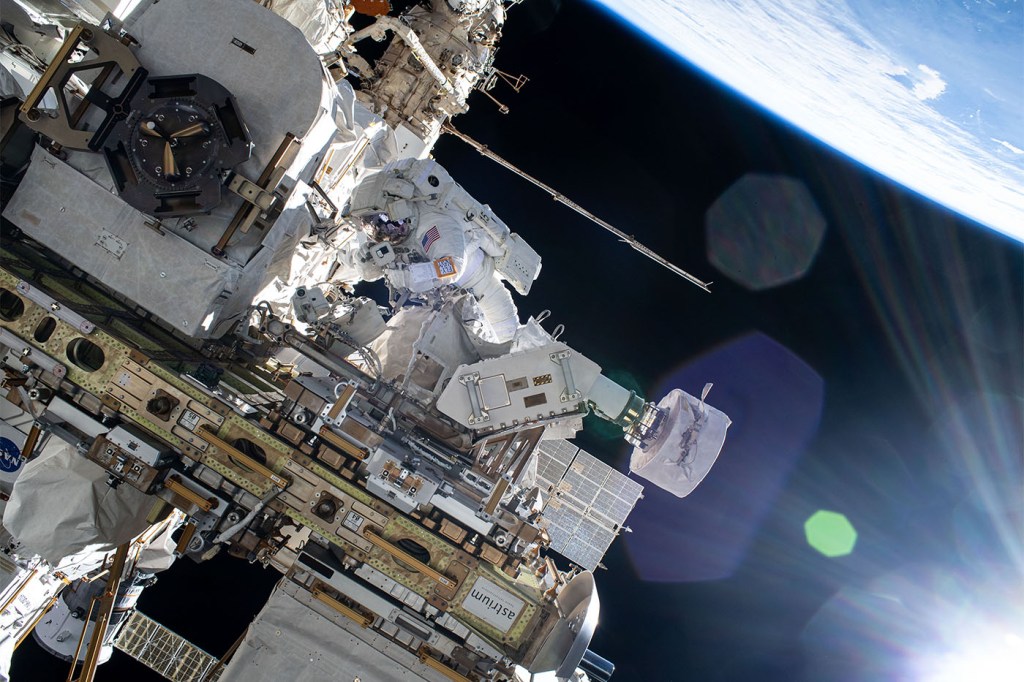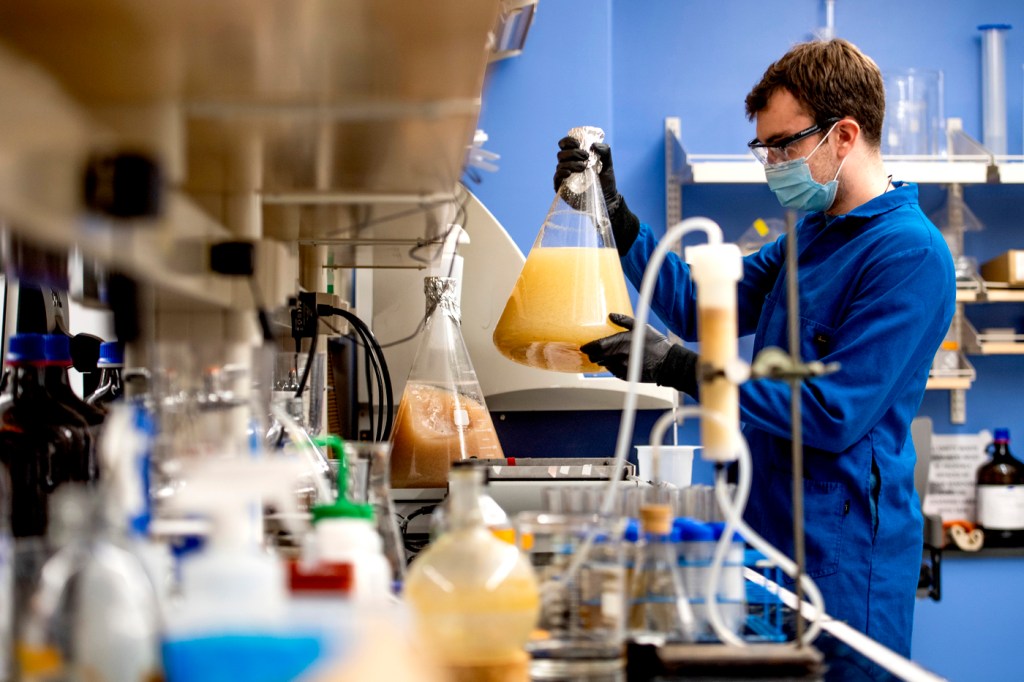There’s a giant crack in an Antarctic ice shelf. Should we be worried?

An accelerating crack in the ice shelf known as Larsen C, the fourth largest ice shelf in Antarctica, has grown by 17 miles since the beginning of December, according to multiple news reports, including a recent article in The New York Times. The crack runs one-third of a mile deep, slicing through to the ice-shelf floor, and is, in total, more than 100 miles long.
Scientists with Project Midas, the British research team that has been monitoring the rift since 2014, warn that a giant iceberg measuring up to 2,000 square miles—approximately the size of Delaware—may soon break away, or “calve,” from the shelf. “[T]his event will fundamentally change the landscape of the Antarctic Peninsula,” wrote the Project Midas team.
We asked Northeastern’s Daniel Douglass, lecturer in the Department of Marine and Environmental Sciences and an expert in glacial geography, to explain why ice shelves form, what causes them to crack, and how they affect the environment.
What exactly is an ice shelf?
An ice shelf is created when a glacier—ice that is moving over land—enters the ocean. The ice will float up and the ocean will flood under, thereby creating the ice shelf. An ice shelf can be anywhere from a hundred to a few thousand feet thick. It becomes progressively thinner toward the outer edge of the glacier. Calving is the process whereby pieces of ice break off the thinner, outer edge of the ice shelf to create icebergs. Ice shelves are different from sea ice, which forms when ocean water freezes. Sea ice is analogous to frozen lakes in winter and is usually less than 10 feet thick.
What role does climate change play in the break-up of an ice shelf? What other factors contribute to its dissolution?
A warming climate can contribute to calving in two ways. First, if the ice shelf is exposed to warmer air above and-or warmer water below, then there will be more rapid melting of the shelf. A thinner ice shelf is weaker than a thick ice shelf, and it is easier for a “through-going,” or top to bottom, crack to form. Such a crack allows pieces of ice to break off the front of the shelf. Second, if water formed by the melting of the glacier’s snow or ice has accumulated on the surface of the glacier and filled surface crevasses—cracks on the glacier’s surface that do not go all the way through—then the water pressure at the bottom of the crevasse can widen and deepen the crack, potentially wedging all the way through the ice shelf,facilitating the calving process.
This second process was clearly in play when the Larsen B ice shelf, positioned just to the north of Larsen C, collapsed in 2003, but I am not sure that this has been a factor for the Larsen C. In the case of Larsen B, there were clearly large bodies of standing water on the surface of the ice before the calving event, and I have not seen that in any of the images of Larsen C. Nevertheless, the entire Antarctic Peninsula has been warming quite rapidly over the past several decades.
Generally, the calving process is a totally natural response to ice flowing into the ocean, and it should be expected. If warming is thinning and weakening the ice shelf, then there will be faster calving, producing more icebergs and the edge of the ice shelf will retreat.
Scientists say the disintegration of ice shelves contributes to rising global sea levels. How so?
Ice shelves act as buttresses to keep glaciers from flowing into the ocean. Sea levels rise when the ice in a glacier that is still on land accelerates into the ocean. The glacier then will lose ice to the ocean, and that transfer of ice mass displaces ocean water and sea levels rise.
Sea level rise has the potential to be the most expensive consequence of global climate change. Many of the world’s largest cities grew in coastal environments because the nearby ocean facilitated transportation (shipping) and provided food (fishing). Sea level has not changed much in the past several thousand years, so it made sense to invest in infrastructure close to the water to facilitate the loading and unloading of ships. If sea levels rise too much, however, cities like New York, Mumbai, Shanghai, and of course Boston will no longer be in an ideal location. They could experience flooding during storms and perhaps even during twice-daily high tides. At first this will be an inconvenience, but as sea level rise becomes more dramatic, we will be faced with difficult decisions about whether to build sea defenses to protect the land from being flooded or to abandon certain areas to the rising waters.
How might we stop the processes that create these rifts?
Calving is an inevitable consequence of glaciers flowing into oceans. There are probably giga-technologies (very large-scale engineering processes; the extreme opposite of nanotechnologies) that could close the rift that has formed in Larsen C and suture the loose piece back onto the glacier, but I don’t think that would be a good allocation of resources. That ice is already in the ocean, and the calving event itself does not cause sea level rise until the land-based glacier accelerates into the ocean.
The long-term solution is to stabilize the Earth’s climate so that glaciers don’t continue to melt, thin, and accelerate into the ocean. The obvious place to start would be to reduce the amount of fossil fuels that are used in the global economy. The alternatives, including solar panels and wind turbines, are being improved all the time. Innovative research could yield a kind of energy revolution that permits us to transition away from fossil fuels entirely.
There are also a wide range of geoengineering options to manage the Earth’s climate at the global scale. These include inducing reflective clouds in the atmosphere, fertilizing the ocean with iron so that algae growth absorbs excess carbon dioxide from the oceans and atmosphere, and mirrors in space to reflect incoming sunlight. Some of these methods will be more effective than others, but all are experimental, and all will have unintended and potentially negative consequences.
Photo via Flickr user Stuart Rankin





